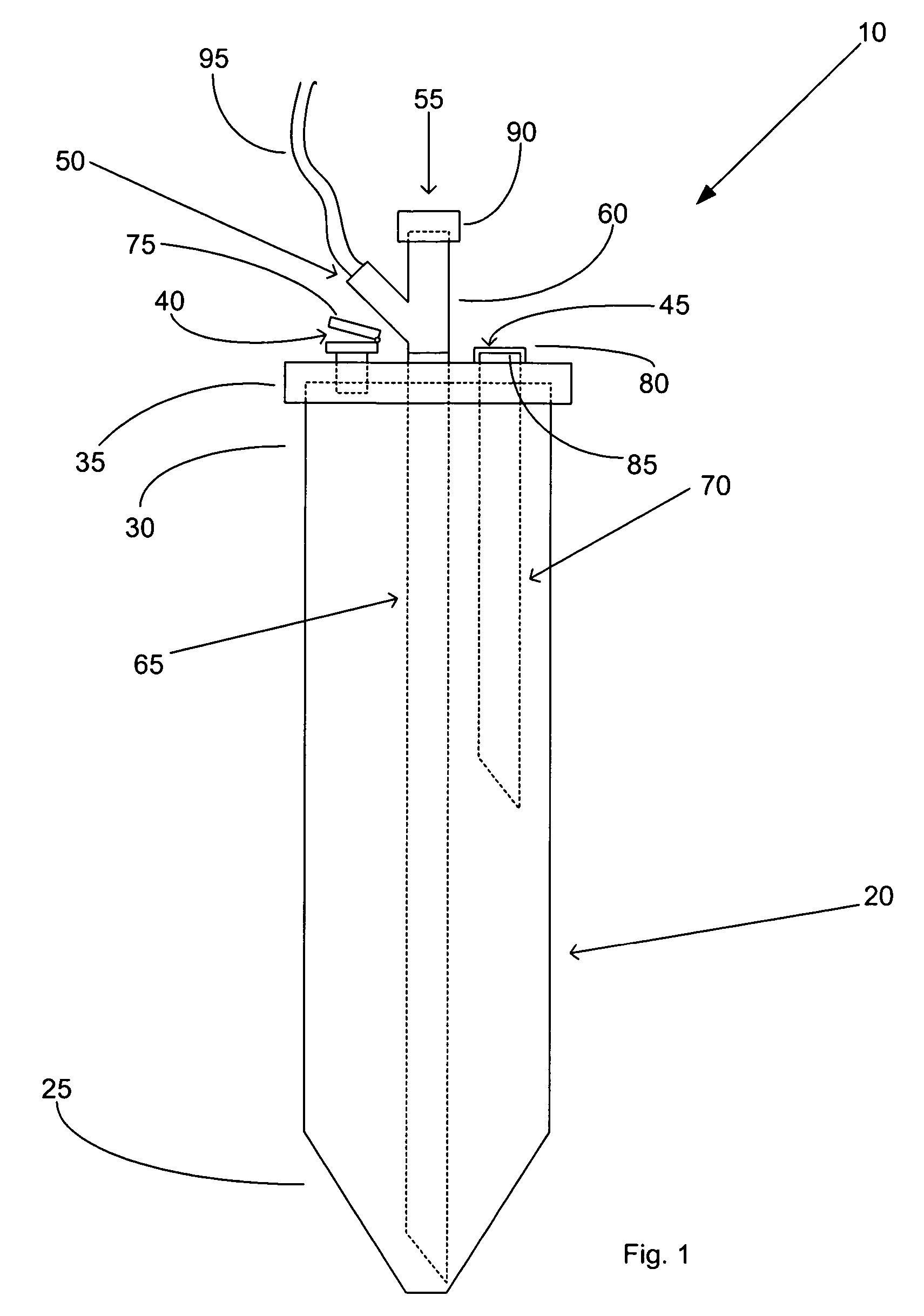Device and method for preparing washed red blood cells for newborn transfusions
a technology of red blood cell and transfusion device, which is applied in the field of premature newborns, can solve the problems of increasing the amount of potassium lost by the red blood cell by irradiation, and achieve the effects of cost saving, small volume and easy operation
- Summary
- Abstract
- Description
- Claims
- Application Information
AI Technical Summary
Benefits of technology
Problems solved by technology
Method used
Image
Examples
Embodiment Construction
[0018]In the following detailed description of the preferred embodiments, reference is made to the accompanying drawings which form a part hereof, and in which are shown by way of illustration specific embodiments in which the invention may be practiced. It is to be understood that other embodiments may be utilized and structural changes may be made without departing from the scope of the present invention.
[0019]As shown in FIG. 1, the cell washing device 10 comprises a relatively small volume, test-tube shaped container 20 having a closed bottom end 25 and an open top end 30. While the volume of the container 20 should equal to less than the volume of a standard unit of RBC's, 250 ml to 350 ml, the preferred volume of the container for newborn transfusions is about 50 ml. The closed bottom end 25 may be round, conical, or flat bottomed, however a conical or partially conical shape is preferred to maximize withdrawal of washed RBC's. The container 20 is preferably graduated in 5 ml ...
PUM
| Property | Measurement | Unit |
|---|---|---|
| volume | aaaaa | aaaaa |
| volume | aaaaa | aaaaa |
| volume | aaaaa | aaaaa |
Abstract
Description
Claims
Application Information
 Login to View More
Login to View More - R&D
- Intellectual Property
- Life Sciences
- Materials
- Tech Scout
- Unparalleled Data Quality
- Higher Quality Content
- 60% Fewer Hallucinations
Browse by: Latest US Patents, China's latest patents, Technical Efficacy Thesaurus, Application Domain, Technology Topic, Popular Technical Reports.
© 2025 PatSnap. All rights reserved.Legal|Privacy policy|Modern Slavery Act Transparency Statement|Sitemap|About US| Contact US: help@patsnap.com


